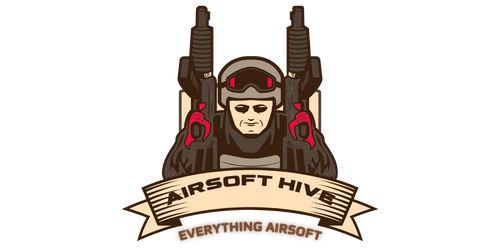Imagine stepping onto an airsoft battlefield, armed with knowledge that sets you apart from the rest. This in-depth guide to airsoft tactical command and leadership will equip you with the skills and strategies needed to excel in this adrenaline-fueled sport. Whether you are a seasoned player or new to the game, this comprehensive guide will walk you through the intricacies of commanding a team, making crucial decisions on the field, and ultimately leading your squad to victory. So grab your gear and get ready to become an invaluable leader in the world of airsoft.

Choosing the Right Airsoft Tactical Command and Leadership Style
Understanding Different Command and Leadership Styles
When it comes to airsoft tactical command and leadership, it’s important to recognize that there are different styles that can be utilized. Each style has its own characteristics and strengths, and understanding these styles can help you choose the right one for your team.
Some common command and leadership styles in airsoft include authoritarian, democratic, and laissez-faire. An authoritarian style involves strong control and decision-making authority, while a democratic style involves involving the team in decision-making and seeking their input. Lastly, a laissez-faire style allows team members to take the lead and make their own decisions.
Identifying Your Personal Command and Leadership Style
Just as it’s important to understand the different styles, it’s equally important to identify your own personal command and leadership style. Reflecting on your strengths, weaknesses, and preferences can help you choose the style that aligns best with your personality and abilities.
To do this, consider your communication style, decision-making tendencies, and how you manage conflict. Are you naturally more assertive and decisive, or do you prefer to gather input from your team before making decisions? Understanding your own style will allow you to lead more effectively and authentically.
Adapting Your Style to Different Situations
While it’s important to have a core command and leadership style, it’s also crucial to be able to adapt your style to different situations. Not every scenario will require the same style of leadership, so having the ability to be flexible is key.
For example, in a high-pressure situation where quick decision-making is critical, a more authoritarian style may be necessary to ensure swift action. On the other hand, in a scenario that requires collaboration and teamwork, a democratic style that encourages open communication and input from team members may be more effective. Being able to adapt your style to meet the needs of the situation will enhance your overall leadership effectiveness.
Developing Essential Leadership Skills for Airsoft
Effective Communication
Effective communication is the foundation of successful leadership in airsoft. Clear and concise communication ensures that everyone understands objectives, strategies, and roles. As a leader, it’s important to develop strong communication skills to convey information accurately and efficiently.
This includes utilizing verbal communication, such as giving clear instructions and providing feedback. It also involves non-verbal communication, such as using appropriate hand signals and visual cues in the field. Being able to adapt your communication style to suit different situations and individuals will help you effectively lead your team.
Strategic Thinking and Decision Making
A good leader in airsoft must possess strong strategic thinking and decision-making skills. This involves analyzing the battlefield, assessing the current situation, and making sound judgments based on that information.
Strategic thinking requires considering multiple factors, such as team capabilities, resources, and objectives, to develop effective strategies. It also involves anticipating potential challenges and planning accordingly. Being able to make timely and informed decisions will help your team navigate through complex scenarios successfully.
Team Building and Teamwork
Building a cohesive and effective team is vital for successful airsoft leadership. This requires fostering a sense of camaraderie, trust, and teamwork among team members.
As a leader, it’s important to create opportunities for team building activities and encourage open communication. Understanding the strengths and weaknesses of each team member can help you assign suitable roles and responsibilities, maximizing the team’s overall performance. By promoting teamwork and collaboration, you can create a supportive and productive environment for your team.
Conflict Resolution and Mediation
Conflicts can arise in any team setting, and airsoft is no exception. As a leader, it’s important to develop conflict resolution and mediation skills to address issues effectively and maintain team cohesion.
This involves actively listening to both sides of a conflict, facilitating open and respectful communication, and finding mutually beneficial resolutions. Being able to mediate conflicts and promote healthy problem-solving can help your team overcome challenges and maintain a positive working environment.
Creating a Tactical Command Structure
Defining Roles and Responsibilities
In order to establish a successful command structure, it’s essential to clearly define roles and responsibilities within the team. This ensures that everyone understands their specific duties and functions, minimizing confusion and maximizing efficiency.
When defining roles, consider the strengths and skills of each team member. Assign tasks that align with their abilities and experience, allowing them to contribute effectively to the team’s objectives. By clearly communicating these roles and responsibilities, you can ensure that everyone is on the same page and working together towards a common goal.
Establishing a Chain of Command
A clear chain of command is crucial for effective airsoft leadership. This provides a framework for decision-making and facilitates efficient communication within the team.
Establishing a chain of command involves designating leaders at different levels, such as squad leaders, team leaders, and overall commanding officers. Each leader has responsibilities and authority over their respective teams and reports to the next level in the hierarchy. This ensures that information flows smoothly up and down the chain, enabling quick and coordinated responses.
Setting Clear Objectives and Mission Priorities
To effectively lead your team, it’s important to set clear objectives and prioritize missions. Clearly defined objectives provide a sense of direction and purpose, motivating team members and guiding their actions.
When setting objectives, consider the overall mission and the resources available. Break down the mission into smaller, achievable goals, and communicate them clearly to the team. By setting clear priorities and objectives, you can ensure that everyone is working towards a common purpose and maximize the team’s effectiveness.
Understanding Airsoft Tactics and Strategies
Study and Research Different Tactics
A strong understanding of airsoft tactics and strategies is essential for effective leadership. Take the time to study and research various tactics employed in airsoft, such as flanking, bounding overwatch, and suppressive fire.
By understanding different tactics, you can evaluate their strengths and weaknesses and determine which ones are most suitable for your team and objectives. This knowledge will help you make informed decisions and develop effective strategies to outmaneuver and outsmart your opponents.
Utilizing Cover and Concealment
One of the fundamental aspects of airsoft tactics is utilizing cover and concealment effectively. Cover provides protection from enemy fire, while concealment helps to hide your movements and intentions.
As a leader, it’s important to train your team to identify and utilize cover and concealment strategically. This involves understanding the terrain and using natural or man-made structures to your advantage. By teaching your team to effectively use cover and concealment, you can enhance their survivability and overall effectiveness on the battlefield.
Executing Effective Movement and Maneuvers
Movement and maneuvering are essential components of airsoft tactics. Being able to navigate the battlefield efficiently and coordinate movements with your team is crucial for success.
Train your team to execute tactical movements, such as flanking maneuvers, bounding overwatch, and fire team rushes. This involves understanding formations, communication protocols, and individual responsibilities. By practicing and refining these movements, you can maximize your team’s effectiveness and increase your chances of victory.

Implementing Effective Communication Techniques
Using Clear and Concise Radio Communication
In the fast-paced environment of airsoft, clear and concise radio communication is vital for effective leadership. Radios allow for real-time communication and coordination among team members, ensuring that everyone is on the same page.
Train your team on radio protocols and encourage them to communicate relevant information concisely and clearly. This includes using standardized call signs, providing accurate situational reports, and relaying crucial orders and information in a timely manner. By establishing clear radio communication practices, you can enhance teamwork and decision-making on the field.
Implementing Hand Signals and Visual Communication
In addition to radio communication, hand signals and visual communication play a critical role in airsoft leadership. These non-verbal cues allow for silent and quick communication in situations where radio communication may not be feasible or advisable.
Teach your team common hand signals and visual cues that are relevant to different scenarios and missions. This includes signals for movement, engaging the enemy, and indicating hazards or objectives. By implementing effective hand signals and visual communication, you can enhance stealth and coordination on the field.
Ensuring Proper Use of Communication Equipment
To maintain effective communication, it’s crucial to ensure that communication equipment is properly maintained and used appropriately. This includes regular equipment checks, battery replacements, and troubleshooting any technical issues.
As a leader, take responsibility for overseeing and organizing communication equipment, such as radios and signal devices. Train your team on proper equipment usage and care, emphasizing the importance of maintaining communication channels. By ensuring proper use of communication equipment, you can minimize the risk of communication failures and disruptions.
Developing and Implementing Standard Operating Procedures (SOPs)
Establishing SOPs for Different Scenarios
Standard Operating Procedures (SOPs) provide a framework for consistent and effective decision-making and actions in airsoft. SOPs outline the step-by-step processes and protocols that should be followed in various scenarios and situations.
As a leader, develop and establish SOPs for different common scenarios, such as patrolling, ambushes, and reconnaissance. These SOPs should cover tasks, responsibilities, communication procedures, and safety protocols. By having well-defined SOPs, you can ensure that your team operates cohesively and efficiently.
Training and Drilling Team Members on SOPs
Establishing SOPs is not enough; proper training and drilling are essential to ensure that team members understand and can execute the SOPs effectively. Regular training sessions and drills help build muscle memory and reinforce the importance of following SOPs.
Conduct regular training sessions to familiarize team members with different scenarios and the corresponding SOPs. This can be done through simulated missions, scenario-based exercises, and field training. By practicing and drilling SOPs, you can increase the team’s proficiency and ensure that they can respond effectively in any situation.
Reviewing and Updating SOPs Regularly
Airsoft tactics and strategies are constantly evolving, and it’s important to review and update SOPs regularly. This ensures that your team remains up-to-date with the latest tactics and approaches.
Periodically review and evaluate the effectiveness of your SOPs. Seek feedback from team members and incorporate any new insights or lessons learned into your SOPs. By keeping your SOPs current, you can adapt to changing circumstances and maintain a high level of operational effectiveness.

Delegating Tasks and Assigning Roles
Identifying Individual Strengths and Skills
Understanding the individual strengths and skills of your team members is crucial for effective delegation and role assignment. Each team member brings unique abilities and expertise to the table, and harnessing these strengths will optimize overall team performance.
Conduct assessments and evaluations to identify the strengths and skills of each team member. This can be done through observation, one-on-one discussions, or performance evaluations. By recognizing individual strengths, you can assign tasks and roles that align with those strengths, empowering team members to excel in their respective areas.
Assigning Suitable Roles and Responsibilities
Once you have identified individual strengths, assign suitable roles and responsibilities accordingly. Matching each team member’s skills with the tasks they are best suited for will enhance their engagement and productivity.
Consider the needs of the mission and the objectives you have set. Assign roles that are aligned with the overall objectives and leverage each team member’s strengths. It’s also important to communicate these assignments clearly, ensuring that individuals have a clear understanding of their roles and responsibilities.
Monitoring and Supporting Team Members
Delegating tasks and assigning roles is not a one-time process; it requires ongoing monitoring and support. As a leader, it’s important to provide guidance, feedback, and assistance to team members as needed.
Regularly check in with team members to assess their progress and address any challenges or concerns they may have. Provide constructive feedback and recognition for their efforts, motivating them to perform at their best. By monitoring and supporting team members, you can ensure that tasks are completed successfully and individuals are empowered to contribute effectively.
Maintaining Situational Awareness
Assessing the Battlefield and Analyzing Threats
Maintaining situational awareness is a critical aspect of effective airsoft leadership. This involves constantly assessing the battlefield, analyzing potential threats, and identifying opportunities for your team.
Train your team to be observant and aware of their surroundings. Encourage them to continuously scan the environment, seeking information about enemy positions, terrain features, and potential obstacles. Being able to assess the battlefield and analyze threats in real-time will allow you to make informed decisions and adjust your strategies accordingly.
Monitoring Friendly Forces and Reinforcement Needs
In addition to assessing the enemy’s position and capabilities, it’s important to monitor friendly forces and assess their needs for reinforcement or support. This involves maintaining open communication channels with other team members and staying informed about their status.
Regularly check in with your team members to gather information about their position, ammunition levels, and any assistance they may require. This allows for efficient coordination and timely response in critical situations. By monitoring friendly forces and reinforcement needs, you can ensure that your team operates cohesively and effectively.
Adapting Strategies Based on Changing Situations
Airsoft is a dynamic and fluid activity, and situations can change rapidly. As a leader, it’s essential to be flexible and adapt your strategies based on changing circumstances.
Continuously evaluate the effectiveness of your current strategy and adjust as necessary. This may involve repositioning your team, changing objectives, or altering the overall approach. By being adaptable and open to change, you can maintain the upper hand and lead your team to success.

Leading by Example and Inspiring Confidence
Displaying Strong Ethical and Professional Behavior
As a leader, it’s important to lead by example and display strong ethical and professional behavior. Your actions and attitude set the tone for the entire team and establish expectations for conduct.
Demonstrate integrity, honesty, and fairness in all your interactions and decisions. Uphold a high level of professionalism and adhere to the rules and regulations of airsoft. By modeling strong ethical and professional behavior, you inspire confidence and trust among your team members.
Demonstrating Proper Use of Equipment and Tactical Skills
Competence and proficiency with equipment and tactical skills are essential for effective leadership in airsoft. As a leader, it’s important to demonstrate proper use of equipment and techniques to inspire your team members and ensure their safety.
Regularly train and practice the use of different weapons, equipment, and techniques alongside your team. Share your knowledge and skills, providing guidance and support as needed. By demonstrating your expertise, you set a standard for excellence and inspire your team to strive for the same level of proficiency.
Motivating and Encouraging Team Members
Motivation plays a crucial role in team performance, and as a leader, it’s your responsibility to keep your team members motivated and inspired. Celebrate their successes, offer words of encouragement, and acknowledge their hard work and dedication.
Create a positive and supportive environment where team members feel valued and appreciated. Recognize individual efforts and contributions, fostering a sense of camaraderie and teamwork. By motivating and encouraging your team members, you build their confidence and loyalty, enhancing overall team performance.
Evaluating and Improving Command and Leadership Performance
Conducting After-action Reviews (AAR)
Continuous improvement is a key aspect of effective leadership. After-action reviews (AAR) provide an opportunity to evaluate and reflect on the team’s performance after each mission or training exercise.
Conduct AAR sessions to debrief the team and gather feedback on what went well and areas for improvement. Encourage open and constructive discussion, allowing team members to share their perspectives and insights. By conducting AARs, you can identify areas that need improvement and make necessary adjustments to enhance your command and leadership effectiveness.
Receiving Feedback and Critiques from Team Members
Feedback and critiques from team members are invaluable for personal and professional growth as a leader. Create a culture of open communication and encourage team members to provide constructive feedback and suggestions.
Regularly seek input from your team members on your command and leadership style, decision-making processes, and communication effectiveness. Actively listen to their feedback and implement changes where necessary. By embracing feedback and critiques, you can continuously improve your leadership skills and strengthen your bond with your team.
Continued Professional Development and Training
Leadership skills in airsoft, like any other field, require ongoing development and training. Commitment to continued professional development helps you stay informed about the latest tactics, technologies, and best practices.
Stay current with industry trends and attend workshops, seminars, or courses that focus on leadership development. Engage in self-study and research to expand your knowledge base and skills. By investing in your own professional development, you can ensure that you are equipped with the necessary tools and knowledge to lead your team effectively.
In conclusion, effective airsoft tactical command and leadership depend on a combination of skill, knowledge, adaptability, and passion. By understanding different command and leadership styles, developing essential leadership skills, creating a tactical command structure, understanding airsoft tactics and strategies, implementing effective communication techniques, developing and implementing SOPs, delegating tasks and assigning roles, maintaining situational awareness, leading by example and inspiring confidence, and continuously evaluating and improving your command and leadership performance, you can become a successful airsoft leader. Keep refining your skills, staying open to learning, and embracing new challenges, and you will thrive as a leader in the world of airsoft.



